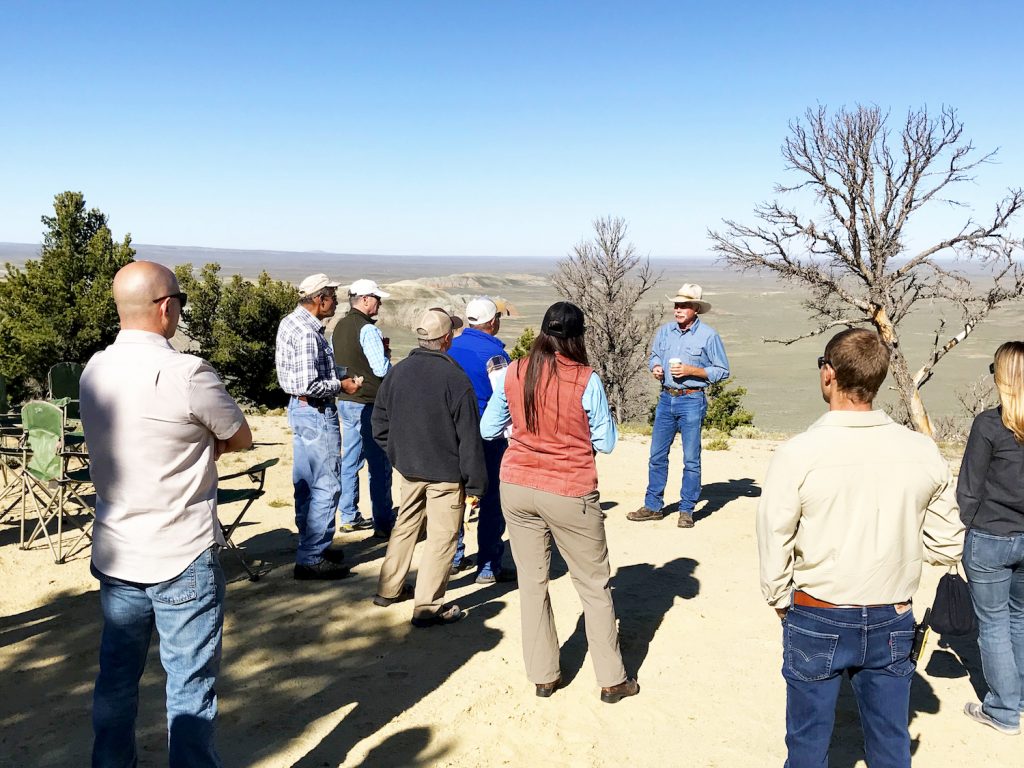June 9, 2020
Earlier this month, members of Citizens for the Red Desert and staff from the Wyoming Outdoor Council hosted Gov. Mark Gordon for a tour of the Northern Red Desert. The governor was interested to see firsthand one of the state’s wildest landscapes and learn about tourism, economic diversification, and recreation opportunities in the desert ahead of an upcoming land management plan revision that will impact the area.
During the tour we stopped at the Whitehorse Creek and Honeycomb Buttes wilderness study areas; visited rancher Jim Hellyer and his family; heard about the Oregon Trail and westward expansion from historian Todd Guenther; and met with other people including Rock Springs Chamber of Commerce Director Rick Lee, Eastern Shoshone tribal member Jason Baldes; local outfitter Bobbi Wade, Lauren Heerschap of the Central Wyoming Climbers’ Alliance, and Atlantic City resident John Mionczynski.
At the end of the day, we presented the governor with statements from 12 members of the Citizens for the Red Desert ad-hoc steering committee. This group represents hunters, tribal members, conservationists, outfitters, recreationists, history buffs, members of the faith community, and more.
The majority of the Red Desert is federal public land. The Bureau of Land Management is currently revising a plan that will determine how 3.6 million acres of public lands, including the Northern Red Desert, will be managed for the next two decades. The draft of this plan may be released any day now.
We appreciate Gov. Gordon’s thoughtful conversations with people of the tour about their connections to the desert, his enthusiasm for the recreational and economic diversification opportunities it has to offer, and his recent comments that federal officials should respect local input when crafting the management plan.
The Northern Red Desert is a national treasure worth protecting, and it’s right in our own backyard. We hope that Gov. Gordon — and all Wyomingites — will come to see all the values of the desert and speak out to protect it for future generations.



